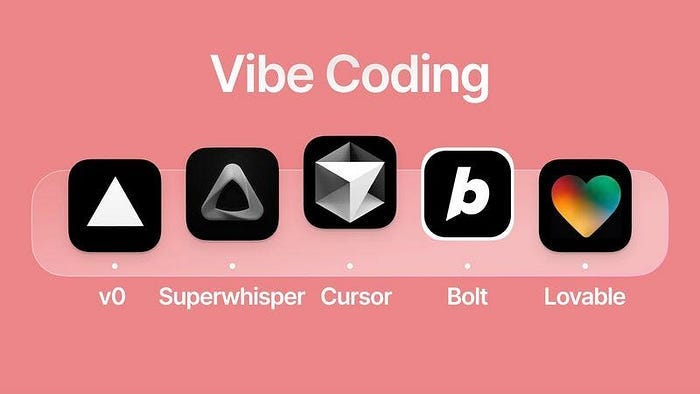Send good vibes
A few words away from a decent product
Last weekend, in just 36 minutes, I built, developed, and deployed this web app.
It’s called In The Box - a repository of newsletters that I plan to expand into a full-fledged community. I’ll be focusing on it more in the coming weeks (I’ll need to populate it - send tips if you have!)
But what’s more striking isn’t the tool itself, which is fairly basic, it’s how it came to exist.
I built it entirely through Lovable, a sort of ChatGPT for web development, which quickly assembled the UI, set up a GitHub repository, and handled deployment with a custom domain.
And I didn’t write a single line of code. I just reviewed it.
Sure, I could have manually coded the database, but not as fast as Lovable did.
Also, I’m not an expert in web design, but I got exactly the vintage, Windows XP vibe I was looking for.
What’s all this about, anyway? Andrej Karpathy, former AI guru at Tesla and X, calls it “vibe coding.” In simple terms: you describe what you want in natural language, and AI generates the code. No syntax struggles. No late-night Stack Overflow deep dives.
Just vibes.
As he put it: “It’s not really coding - I just see things, say things, run things, and copy-paste things, and it mostly works.”
And this isn’t theoretical. It’s happening now. A growing wave of tools is making software development as simple as describing a product in plain English.
This goes far beyond ChatGPT writing Python snippets for your university coursework. These tools don’t just generate code - they build and deploy infrastructure.
You tell them what you need, and they make it happen.
The numbers say it all:
In March 2025, Y Combinator reported that 25% of startups in its Winter 2025 batch had codebases that were 95% AI-generated.
Bolt scaled to a $20M revenue run rate, while Lovable hit $10M just two months after monetizing.
And according to Amjad Masad, CEO of Replit (another vibe-coding tool), “75% of Replit customers never write a single line of code.”
Vibe-coding is part of what Pete Sena called the "Great Democratization Cycle". We’ve seen it in photography as it evolved from darkrooms to digital cameras, which eliminated film processing, to smartphones and Instagram filters, making everyone a high-end “photographer.”
Now, AI is lowering the barriers to coding. If you have an idea, you’re just a few prompts away from a working product.
No, this doesn’t mean you can launch a billion-dollar startup while sipping coffee. But you can spin up an MVP in a few hours - something that once took weeks or months.
From a technical, economic, and product perspective, this shift is fascinating. And worth digging into.
In this edition of Artifacts, we’ll break down: the tech that makes vibe coding possible, the ripple effects across the software development chain, what this (may) mean for the future of product - and who gets to build it.
The Story
Before moving any forward, good to understand a bit of how these systems work.
Imagine you have an idea for an app - a simple task manager with login functionality. Instead of coding it yourself, you describe what you want in plain language. That’s where the system takes over, breaking your request down into components and assembling them into a working application.
1. Understanding Your Request: The Role of the LLM
The Large Language Model (LLM) is the brain of the operation. It takes your prompt - “Build a task manager with login support” - and translates it into structured code. It understands that you’ll need a front-end UI, a backend to handle tasks, and user authentication. More than just generating code, the LLM anticipates what’s needed, ensuring that each piece fits together logically. If you later say, “Add dark mode” or “Make it mobile-friendly”, the LLM adjusts accordingly, refining the app iteratively.
2. Bringing It to Life: The Agent Runtime
The LLM doesn’t work alone. The Agent Runtime acts as an orchestrator, making sure everything generated by the LLM is functional, cohesive, and follows best practices. It’s like a project manager, coordinating tasks, managing dependencies, and integrating external tools when necessary. If your app needs a workflow to send reminder emails, the Agent Runtime ensures the right services are wired in properly.
3. Your Control Panel: The UI
You interact with this whole process through a user-friendly interface. Instead of writing complex commands, you type in your idea, and the UI streams responses in real time. As the LLM generates code, the UI displays it dynamically, showing a preview of your app as it takes shape. Want to make changes? Just describe them, and the system updates the app accordingly.
4. Expanding Capabilities: Third-Party Integrations
Some app features require specialized services. Rather than reinventing the wheel, the system pulls in third-party components based on what your app needs: Resend handles email notifications, Supabase provides a backend database and authentication, Clerk manages user identity.
5. Testing on the Fly: Execution Environments
Before you deploy your app, you’ll want to see it in action. This is where execution environments come in. With WebContainers, your Node.js app runs directly in the browser - no local setup needed.
All of this comes with a set of potential implications I’ve been parsing, gathering, and brainstorming.
Vibe coding could split developers into two camps:
Those who understand the foundations and can wield AI effectively.
Those who rely entirely on AI, oblivious to what’s happening under the hood.
Less coding, more reviewing. Instead of writing code, engineers will vet, optimize, and integrate AI-generated solutions. (especially as code generated by these tools seems to be a bit dirty as of yet)
For product managers, it’s an opportunity - and a reckoning. Non-technical folks would get a seat at the table, but they couldn’t hide behind wireframes and docs. Prototypes are just clicks away. No excuses.
As for products? Interfaces could be churned out by LLMs, built on existing templates and past designs. Good for efficiency. Bad for originality. We may expect sameness.
And coding itself? More disposable, less reusable. Open-source libraries and Stack Overflow might fade as AI generates fresh code on demand. Already, starting a new project is easier than editing an old one - because context is hard. If this trend holds, things could get weird.
This raises big questions. Pete Sena put it well: What happens when makers are separated from their materials?
Would we celebrate a world where painters never touch paint? Where sculptors never feel clay? Where chefs never taste their ingredients?
It’s not just about shipping software. It’s about understanding systems deeply - so when things break (and they will), you can actually fix them.
One CTO warned that AI reliance leads to “hidden complexities” - quick fixes that spiral into chaos at scale. It’s also about creating elegant, maintainable solutions that last. Good software isn’t just functional; it endures.
The job market could also shift.
AI will take over repetitive coding - web development, scripting, testing, deployment - shrinking the need for junior developers who typically start with those tasks. At the same time, companies will prioritize mid-to-senior engineers who understand AI-assisted workflows and system architecture.
Entry-level jobs won’t disappear, but they’ll get harder to land.
Instead of cutting their teeth on grunt work, newcomers will be expected to think strategically from day one.
One thing, however, will stay the same - maybe even grow in importance: what drives new products and the ideas behind them.
More than ever, the real skill will be identifying concrete problems and crafting solid solutions (and ideas of products) to tackle them.
If vibe coding takes off, the technical barriers between idea and execution will shrink. Moving from concept to a working product will be faster, but the hardest part - figuring out what’s worth building - will still be the priority.
Save for Later
Decentralisation and the good it comes with + some very vey nice slides on rebuilding the Internet.
Wikipedia is making some enemies.
What the far right thinks about content moderation in the EU + some very very interesting guidelines on (re)designing products from the Commission.
AI coding assistant are also lazy, yet here’s how to use them properly.
Technology is increasingly boring?
Learning languages? Nah
Such a cool adv from Perplexity:
Someone said this before
“The only failure in your twenties is inaction. The rest is trial and error.”
The Bookshelf
Speaking of products and low latency, “The Lean Product Playbook” by Dan Olsen is a solid choice - packed with actionable insights and genuinely inspiring moments. It’s highly practical - maybe even too practical.
📚 All the books I’ve read and recommended in Artifacts are here.
Nerding
To move fast with all those time consuming tasks like merging PDFs, cutting videos, etc. all in one suite. Try out 123apps.
☕?
If you want to know more about Artifacts, where it all started, or just want to connect...












bella :)